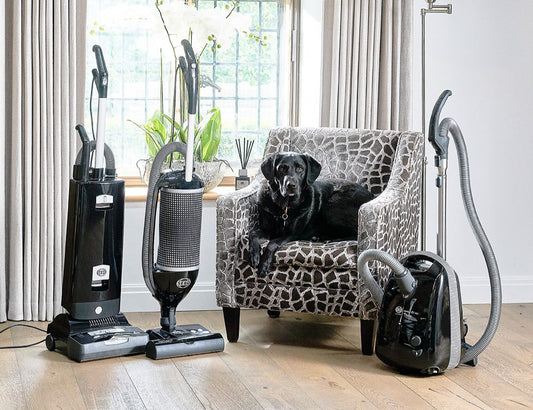The SEBO S-Class Filtration

What does S-Class Filtration mean?
Every SEBO upright and canister vacuum cleaner is equipped with the exclusive S-class, hospital-grade filtration technology. The “S” represents the German word “Schwebstoff”, which directly translates to the term “airborne particles”. The S-class filtration is a European standard, comparable to the popular North American term “HEPA”. However, unlike the HEPA standard where only the filter is expected to absorb 99.97% of particles down to 0.3 microns, the S-class filtration standard can only be obtained by having met the following three criteria:
- A filtration system that absorbs greater than 99.97% of particles down to 0.3 microns in diameter.
- Electrostatic filters that use statically charged microfibers.
- A completely sealed vacuum cleaner that does not leak air from any side.
1. The Filtration System
The first stage of the S-class filtration requirement is to have a filtration system that absorbs greater than 99.97% of particles down to 0.3 microns in diameter. In order to obtain this level of filtration, SEBO vacuums are designed with three filters within the machine:
Step One – A three-layer AeraPure™ vacuum bag
Step Two – A pre-motor micro-filter
Step Three – An exhaust micro-filter

This three-step filtration process ensures that 99.97% of particles down to 0.3 microns in diameter are filtered from the air.

It will remove 100% of particles that are 1 micron in size or larger. For comparison, dust mite feces particles are approximately 10 microns.
2. Electrostatic Filtration
The second stage of the S-class filtration system is the electrostatic filtration. Electrostatic filtration uses statically charged micro-fibers that attract dust particles from the air stream, which then bond onto the fibers. This enables the filter material to have a relatively open texture allowing for smoother air flow. This also improves suction performance while maintaining a highly effective filtration.

3. Completely Sealed Vacuum
The third step in the S-class filtration system is to have a completely sealed vacuum. Dirty air that flows through a vacuum can only be filtered completely if it does not escape into the room through seams or seals in the machine. As a result, every SEBO vacuum cleaner is 100% sealed from seam to seam with air only being expelled through the exhaust filter, or through the Airbelt bumper around the canister vacuums.

Did you know?
Most vacuum cleaner manufacturers make HEPA, or other high-filtration claims, based on laboratory data acquired specifically for the filter material being used and nothing else. They do not take into consideration the filtration effectiveness of the entire vacuum when being operated. This means that there is a potential for dirty, unfiltered air to leak through the seams and seals of the vacuum while it operates, resulting in a lower filtration performance overall.
However, as mentioned above, the only way a vacuum can reach the S-class filtration status is to have a completely sealed vacuum. This is why the filtration effectiveness of each SEBO vacuum is tested while they operate to ensure every SEBO vacuum continues to meet the S-Class Filtration standard, year after year.
Seal of Approval
Over the years, globally recognized foundations, such as the British Allergy Foundation and the Sensitive Choice Program in Australia, have tested SEBO vacuums and given their seal of approval for asthma and allergy sufferers. These endorsements highlight SEBO’s commitment to advanced filtration technology and its effectiveness in reducing airborne allergens, making our vacuums a trusted choice for healthy indoor environments.
No Escape For Dust
With the SEBO system, once dust has been picked up, you never have to face it again.

